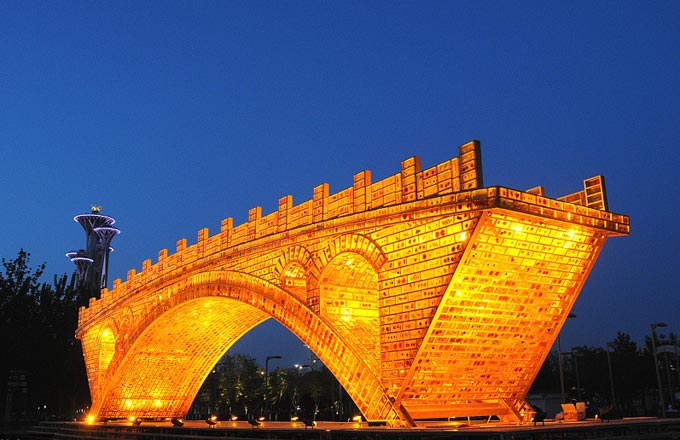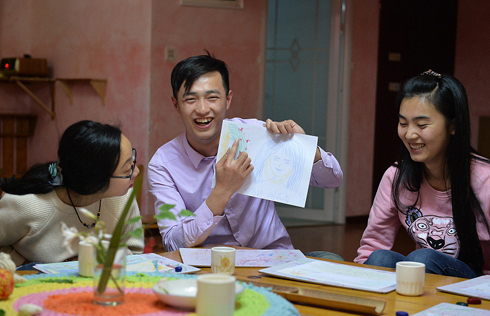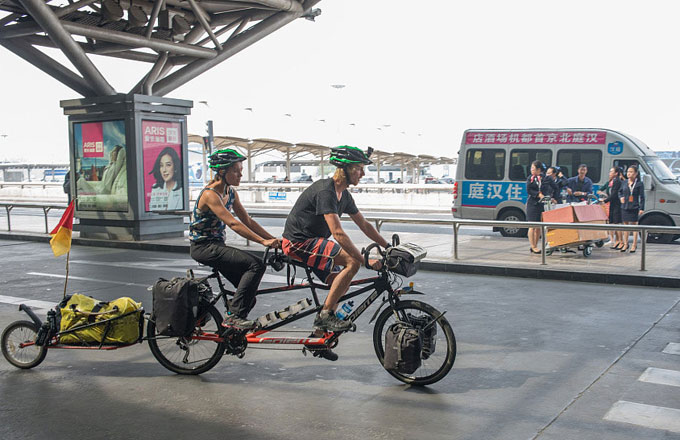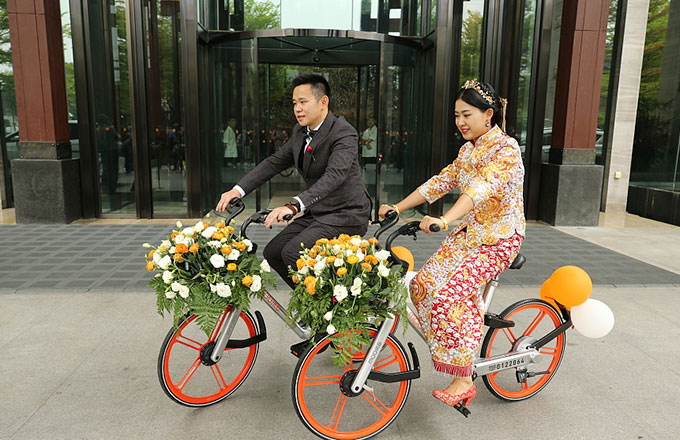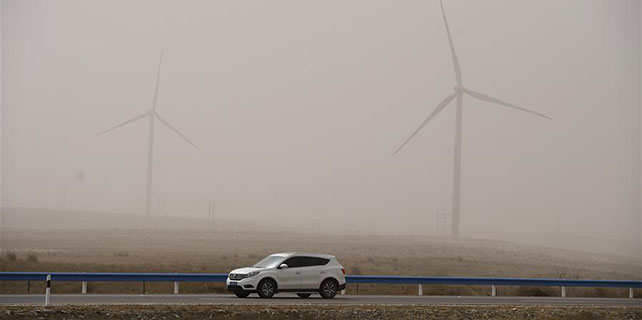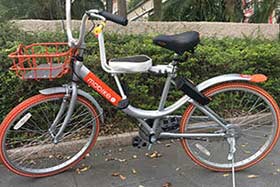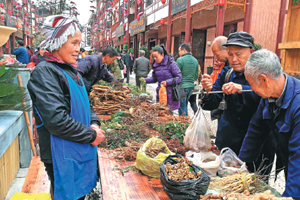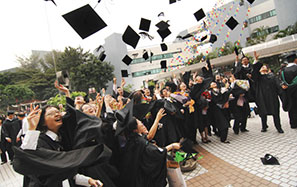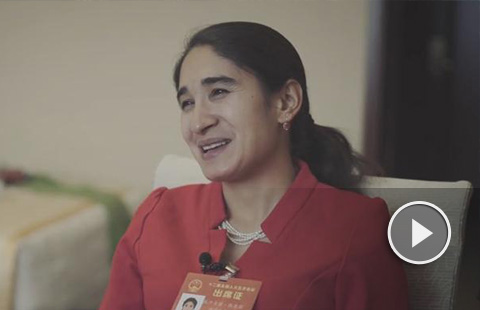Yingxiu five years on
With the quake's epicenter just a stone's throw away from her village in the mountains, He Xiaoyan is arguably one of the most visually descriptive tour guides in the world.
Every day, dressed in traditional Yi ethnic clothing, the 31-year-old takes visitors to the symbolic school in Yingxiu that was reduced to rubble by the temblor and is now a commemorative park.
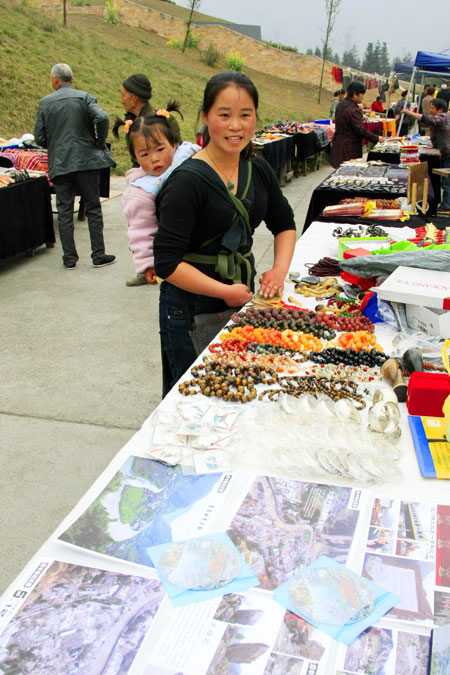 |
|
Many locals earn extra income selling souvenirs since Yingxiu has transformed into a tourist town after the 2008 Wenchuan earthquake. Huang Yiming / China Daily |
She recalls to them the moment the town was thrown into chaos, as mountains split and swayed, and buildings were flattened; about how one-third of residents were killed or injured; and she describes being isolated in the deep mountains for hours, as people tried, bare-handedly, to dig relatives and neighbors from the debris.
Pointing at several dogs lying beside the ruins today, He says they had been gathering there since the quake. "I guess they are still waiting for miracles," she says.
After losing her job at a factory that moved away following the earthquake, He now earns about 2,000 yuan ($330) a month as a guide. Her family also makes extra income from a souvenir shop opened by her husband.
Forty-six women work as guides for the tourism company that has transformed Yingxiu into a quake-themed tourist attraction. About one in three lost a child under the rubble of the school on May 12, 2008.
Yingxiu, once a well-off town with several factories, was among the most severely hit by the quake. Yet with 1.7 billion yuan from central and provincial governments, as well as from Dongguan in Guangdong province, the town has been reborn.
Covering about 1 sq km, the relocated town is home to about 5,700 residents.
Recalling the reconstruction, Liu Zhihong, head of the town government, says much consideration was paid to selecting the location, to avoid the same geological risks that contributed to the destruction of the original town.
Each building is able to withstand an earthquake of 8 or 9 magnitude, nearly the highest level. Except for the school ruins, everything is modern.
Climbing 200 meters up the mountain, a memorial museum for the May 12 Wenchuan earthquake has been built on a flat area. Beside the museum is a cemetery, the final resting place for thousands of victims.
Seen from this spot, the mountains had started to turn green in March. However, the scars remained.
"With the huge number of deaths and the economic loss, Yingxiu has changed totally. We need to adjust to the changes," Liu says, adding that he hopes to make the town an attraction themed as "a global town of love".
Wan Ling, 39, has actively dedicated herself to achieving that goal.
Like many residents, her family lives in a three-floor residential building. With her husband as assistant, Wan opened a tiny restaurant, with a kitchen and two tables on the ground floor. On the first floor, there is a restroom and a dining room with three more tables. The family sleeps on the second floor.
The streets are lined with about 40 similar restaurants and dozens of small hotels, all about a two-minute walk from the school ruins.
Each day, Wan's restaurant receives about 20 diners. She says she is satisfied with the arrangements made by the government, which promises every family will have shelter and work.
"What we experience now is something we couldn't have dreamed of years ago," Wan says, adding her apartment is more spacious and safer than before.
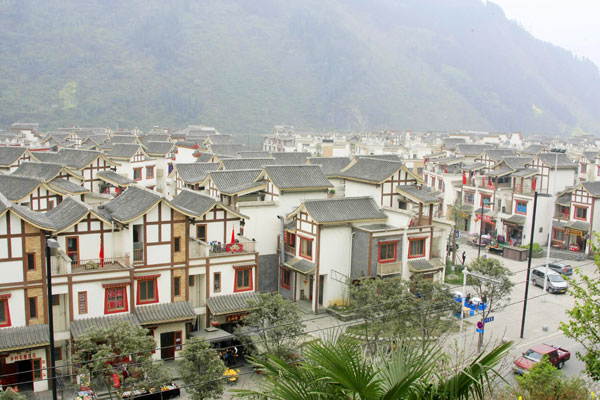 |
|
Yingxiu town, one of the most severely devastated by the 2008 quake, has been reborn. Huang Yiming / China Daily |
- Carpooling brings benefit to Beijing and neighbouring cities
- The real Yu Gong chisels water channels across cliffs
- Taking China's university innovation to market
- China's first cargo spacecraft Tianzhou-1 ready for launch
- As child seats for shared bikes rise in popularity, so do legal concerns




